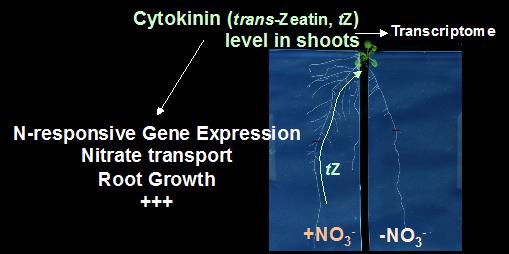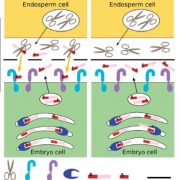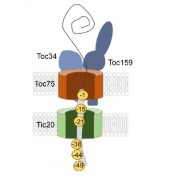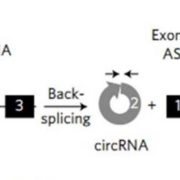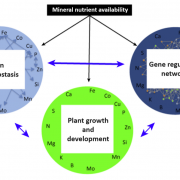trans-Zeatin in Shoots Drives Nitrate Systemic Signaling
Poitout et al. study how plants forage for nutrients in the soil https://doi.org/10.1105/tpc.18.00011.
By Arthur Poitout and Sandrine Ruffel
Background: Nitrate, NO3– (the preferential nitrogen [N] source for most of higher plants) is spread unevenly in the soil due to its high mobile property, a phenomenon known as spatial NO3– heterogeneity. To face this constraint, plants regulate root growth and NO3– uptake/assimilation in different parts of the root system according to the spatial NO3– availability and the N needs of the whole plant. This optimization of N acquisition is the result of a dual regulation involving 1) a local signaling related to external NO3– supply and 2) a root-shoot-root long-distance signaling related to whole plant N/NO3– needs. The molecular basis of this long distance signaling is poorly understood. However, the plant hormone cytokinin was previously shown to be important for the root responses to soil NO3– availability.
Question: Do cytokinins play a role as a root-to-shoot messenger of NO3– systemic signaling, and how do shoots optimize N acquisition in response to spatial NO3– heterogeneity?
Findings: We found that mutant plants that are impaired in cytokinin biosynthesis or in root-to-shoot translocation also are strongly impaired to face spatial NO3– heterogeneity. Both rapid molecular responses (regulation of N-responsive genes) and long-term functional acclimation (regulation of NO3– transport and root growth) to spatial NO3– heterogeneity were strongly reduced in mutant plants compared to the wild type. Shoot transcriptomic profiling showed important transcriptomic changes in response to spatial NO3– heterogeneity that are dependent on cytokinin biosynthesis and transport. We also found that these transcriptomic changes are likely mediated by the active form of cytokinin, trans-Zeatin, in shoots and that glutamate/glutamine metabolism could be a target of trans-Zeatin root-to-shoot translocation in the context of spatial NO3– heterogeneity.
Next steps: When plants face spatial NO3– heterogeneity, long-distance signals originating from both NO3–-supplied and N-deprived roots are integrated in the shoots in order to optimize N acquisition. We wish to decipher the molecular details of the shoot-to-root messenger system of cytokinin-dependent long-distance signaling and to use this information to improve nutrient foraging in plants.
Arthur Poitout, Amandine Crabos, Ivan Petřík, Ondrej Novák, Gabriel Krouk, Benoît Lacombe and Sandrine Ruffel. (2018). Responses to Systemic Nitrogen Signaling in Arabidopsis Roots Involve trans-Zeatin in Shoots. Plant Cell https://doi.org/10.1105/tpc.18.00011.
Keywords: systemic signaling, nitrate, cytokinin, shoot transcriptome


